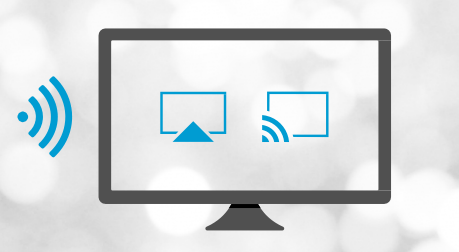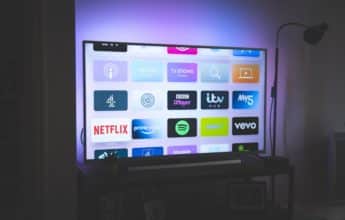We are seeing the next generation of TV playing out.
Applications for Smart TVs and media streaming devices are the next big opportunity for broadcasters and content providers in the media space, and capitalizing on it will be the key to remaining competitive.
All signs point to native and cross-platform apps for Smart TV and Connected TV becoming the norm in the near future. TVs from major manufacturers – Sony, Philips, Sharp – are coming equipped with Android TV. Samsung TVs run Tizen. Many smart TVs come Roku-enabled straight from the warehouse. And while Apple has yet to work out any kind of partnership with manufacturers to have their platform embedded directly in the hardware, Apple TV has sold more than 25 million units worldwide.
Rather than threaten traditional content providers, this is a tremendous opportunity to explore new ways to reach audiences.
Over-the-Top Apps vs. Cable Subscription Apps
There are two main avenues that can be pursued by media companies looking to break into this space: over-the-top applications, and apps that employ a traditional cable subscription model.
Over-the-top (OTT) applications take out the middleman, so to speak. They offer the content directly to the consumer from the provider, without a cable service provider or another type of distributor in between. Netflix or HBO Go are two popular OTT providers.
Depending on business objectives, it may not make sense for some organizations to go with an OTT application. Luckily, apps for Smart TVs and media streaming devices can be developed that employ a cable subscription model where viewers access particular content based on their current cable service. Using TV Authentication, users log in based on their current provider and are presented with particular types of content that correspond with their location and cable package.
Developing for Smart TV and Media Streaming Devices
Forward-thinking organizations have already dived headfirst, and they are seeing amazing success. Netflix, which started as and remains an OTT provider, is obviously the poster child. But others – from traditional broadcasters to major networks to online content providers – are also capitalizing on these relatively new distribution methods.
Major League Baseball, for example, offers their MLB.TV app which lets users watch live or on-demand. Amazon Instant is another such example. And the list continues with HBO GO, Disney, ABC, NBC Sports, even non-traditional outlets like TED Talks. All types of providers in the media space are seeing the value in building apps for Smart TV and media streaming platforms. Those that don’t will fall behind the competition.
The Platforms You Need to Build For
Just as app developers have to tackle multiple platforms for mobile, developing apps for connected TV will present the same challenge. There are a myriad of platforms already. Here are the ones you should be focusing on.
Android TV
To nobody’s surprise, Google developed a platform for TV. And (also unsurprisingly), it’s doing pretty damn well. ALL of Sony’s new TVs run Android TV, and Philips and Sharp will soon follow suit. They’ve also got the Nexus Player for those TVs that don’t support it, and it runs Android TV as well. In other words, millions of people are going to be using Android TV devices.
Apple TV
Maybe Apple hasn’t worked out a deal with a manufacturer to make a TV that runs their platform, but that doesn’t mean they won’t make their own. Even if they don’t, Apple TV has sold more than 25 million units worldwide. That’s a massive potential market to tap into.
Roku
Roku offers streaming sticks, players, and now smart TVs. As of September 2014, more than 10 million streaming players had been sold in the US alone. Like Apple TV and Android TV, Roku has its own OS for applications, and content providers would be wise to capitalize on the growing user base.
Chromecast
More than 10 million Chromecast units were sold globally last year. And the figure represents the units actually sold to end users, not simply to retailers. It is a leader in the robust media streaming device industry, and we can safely assume it will rise in popularity.
Amazon Fire TV
While Amazon has been less than transparent about sales figures, it has stated that “Fire TV sales have significantly exceeded our sales forecast and we are working hard to increase our manufacturing output.” Furthermore, Business Insider estimated that sales would reach almost 6 million by the end of 2014.
Tizen (Samsung TVs)
Samsung accounts for about 25% of annual Smart TV sales and already has the largest share of the 4K TV market. This kind of dominance has allowed them to develop Tizen, their own Smart TV platform, that will be run on all of their new smart TVs. This means less reliance on Google Android, but another platform app developers need to build for.
webOS (LG TVs)
LG, which enjoys a 15% market share in the Smart TV space, has also opted for their own platform: webOS. Like Android and Tizen, it is Linux-based, so in theory, anyone can build apps for it.
While platform fragmentation may complicate the question of which of the platforms to build for, one thing is clear: media companies can’t afford to ignore Smart TV and media streaming platforms any longer.






